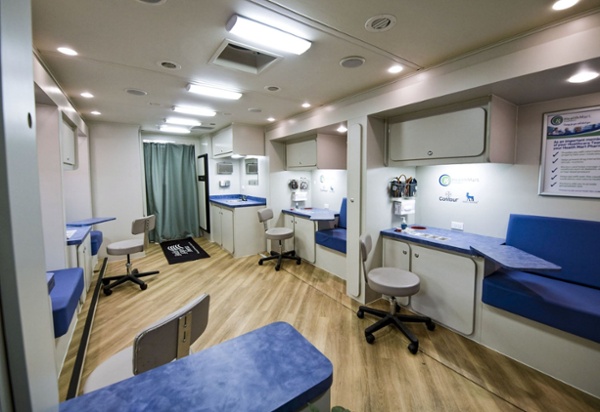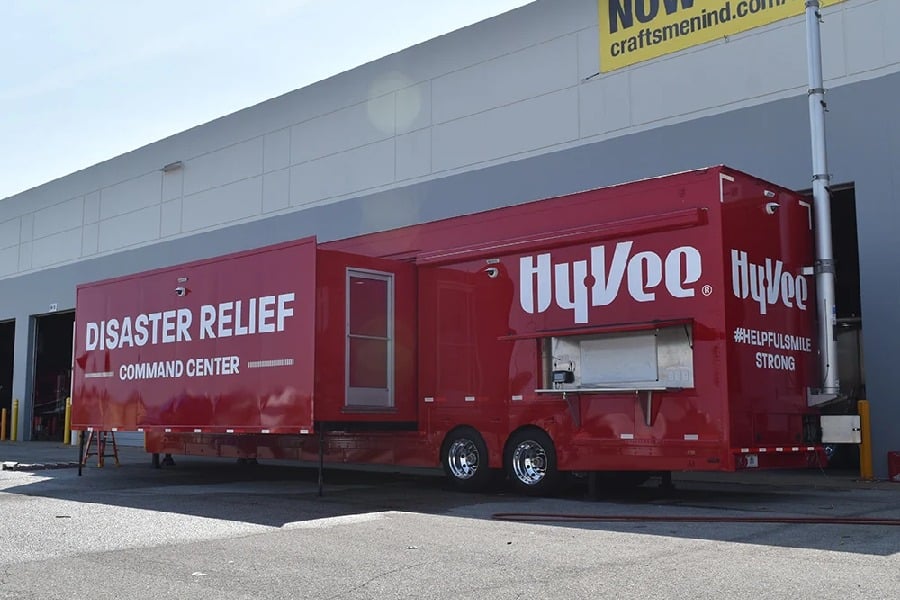Do Mobile Medical Coaches Have Bathrooms?
Mobile medical coaches, also referred to as mobile medical units, are a primary means of delivering medical service to underserved communities,...
3 min read
Craftsmen Industries Aug 7, 2022 2:49:00 PM
-1.jpg)

Blood drives help hospitals care for children, people with chronic anemia, and victims of traumatic injuries. While there is generally no lack of people who would like to give blood, many who would donate don’t. Why? More often than not, accessibility and the lack of organized blood drives limit the amount of donated blood available.
Blood drives require somebody to take the initiative to organize a time and place to hold the drive and volunteers to run it. All of that feels especially difficult when trying to slide into many venue’s packed schedules.
Mobile medical vehicles make blood drives incredibly easy to set up and more accessible to communities. Many people call a medical vehicle specially designed for blood drives a bloodmobile or blood bus. Let’s look at some common questions about bloodmobiles and why it’s worth investing in one for your community.
Most bloodmobiles and blood buses are around 40-feet long. To accommodate this larger vehicle, you’ll need to have at least six empty parking lot spaces available. If you are not in a regular parking lot, it can be helpful to bring a few traffic cones to mark off the area for the blood drive bus.
The only other two criteria for bloodmobiles are:
That’s it. Imagine how flexible blood drives can be when they can be held in almost any location. Once parked, all you are left to do is open the doors and start welcoming donors.
Most bloodmobiles range from a capacity of 20-40 donors, while the biggest blood buses might take over 50. Somewhere around 30 is the average size. According to a San Diego health initiative, many bloodmobiles collect 7000 pints of blood every year.
Traditionally, the Red Cross and other health services organize blood drives in public venues like town halls, university campuses, or sports stadiums. Organizers like these venues because they have plenty of space to facilitate many donors, easy access to bathrooms, and generally aren’t too difficult for members of the public to find.
However, indoor venues aren’t ideal since they have other events happening, sometimes simultaneously. They can also be hard to partition and may require organizers to operate on a less flexible schedule. Some venues won’t host blood drives without payment. Since people don’t pay to donate blood, using these venues comes at a financial loss.
Bloodmobiles are better if you are looking for any of the following:
Medical vehicles also have the upper hand over brick-and-mortar blood drives because they make advertising the event easier. A custom vinyl wrap displays why the vehicle is there and encourages people to participate. Setting up on the side of the road also means more members of the public are likely to see the drive in progress and come to donate. An indoor drive is out of sight and less likely to draw the public in.
Short answer: No.
Red blood cells generally have a lifespan of about 35 days. Plasma can be frozen and stored for up to two years. These times don’t change based on where the blood is collected. Blood collections in buildings have to transport the blood back to the hospital in a car anyway.
Portable blood donation banks, like bloodmobiles, actually decrease the amount of handling required since the vehicle can drive directly to the hospital after the blood drive has finished.
Of course, the answer to this question depends on where you are, your community needs, and whether you have the resources to purchase a bloodmobile. Although like all vehicles, bloodmobiles aren’t cheap, they do save lives. While lives are on the line, almost any investment makes sense.
If you’re not convinced a bloodmobile will work in your area, ask to borrow a bloodmobile from a neighboring town. That way, you can see how the public receives it and test some locations out. According to givingblood.org, around 10% of the population will participate in a blood drive. If your bloodmobile caters to 35 donors, then make sure at least 350 people hear about the drive in advance.
Ultimately, all blood drives are incredible acts of charity for a community to host. Mobile medical vehicles set up specifically for blood drives are an easy and efficient way to increase blood donations. No matter your circumstances, launching a bloodmobile will boost the amount of blood you can accrue for health services. Even if you don’t have the resources at the moment, almost all communities will benefit from budgeting for one in the future.

Mobile medical coaches, also referred to as mobile medical units, are a primary means of delivering medical service to underserved communities,...
.jpg)
Females are the victims of breast cancer. And this disease is expanding at an alarming rate. In most cases, females remain unaware of the problem,...

Communication breakdowns cost lives. Field teams often operate in chaotic environments with little infrastructure when disaster strikes or critical...